Loading libraries and creating a reproducible example
#Load libraries
set.seed(123)
library(tidyr)
library(ggplot2)
#Creating a fake pairwise matrix
locs <- 5
tmp <- matrix(runif(n = locs*locs),nrow = locs,ncol = locs)
tmp[upper.tri(tmp,diag = T)] <- NA
colnames(tmp) <- LETTERS[1:locs]
rownames(tmp) <- LETTERS[1:locs]
tmp
#Converting into a data frame
tmp1 <- as.data.frame(cbind(rownames(tmp),as.data.frame(tmp)))
names(tmp1)[1] <- "locA"
rownames(tmp1) <- NULL
head(tmp1)
#Changing it to long form and getting rid of NAs
tmp1 <- gather(tmp1, key = "locB",value = "value",-locA)
tmp1 <- tmp1[!is.na(tmp1$value),]
tmp1
#Making a tiled plot based on default levels
ggplot(tmp1, aes(x = locA, y=locB, fill=value, label=round(value,3)))+
geom_tile(color="black")+
geom_text(size=5,color="white")
But for reasons that make more biological sense, I want to change the order in which those comparisons are ordered
#biological order
my.order <- c("A","C","D","B","E")
my.order
#re-leveling
tmp1$locA <- factor(tmp1$locA, levels = my.order,ordered = T)
tmp1$locB <- factor(tmp1$locB, levels = my.order,ordered = T)
tmp1
#the releveled plot
ggplot(tmp1, aes(x = locA, y=locB, fill=value, label=round(value,3)))+
geom_tile(color="black")+
geom_text(size=5,color="white")
I am trying to find a way to get the "B-C" & "B-D" comparisons to be represented in the lower diagonal.
I tried to find a solution with a full matrix and lower.tri(), but have failed so far
#here is the full matrix
x <- tmp
x[is.na(x)] <- 0
y <- t(tmp)
y[is.na(y)] <- 0
full.matrix <- x+y
full.matrix
#the function lower.tri might be useful in this context
lower.tri(full.matrix)

